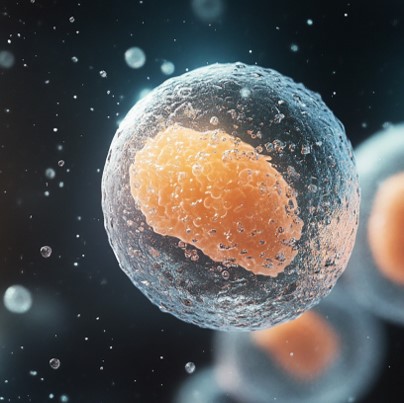
Ikerbasque Researcher at the University of the Basque Country, Noemí Jiménez Rojo, has been awarded a research grant – Early Career by the Human Frontier Science Program (HFSP), worth $1.2 Million. This is one of the most prestigious scientific research grants globally. It is awarded through a highly competitive process and therefore represents a major international recognition.
The project, led by the researcher from the Faculty of Science and Technology, is titled “MetaCrystal: Metabolic principles of intracellular crystallization”. It aims to uncover how the zebrafish manages to produce key crystals involved in pigmentation with a level of precision in size, shape, and assembly that far exceeds our current ability to synthetically generate such structures. The findings could aid the development of therapies for diseases involving abnormal crystallization—such as kidney stones and gout—as well as the synthesis of organic crystals for optics and materials science. Dr. Jiménez is collaborating on the project with Dr. Rita Mateus (Max Planck Institute of Molecular Cell Biology and Genetics, Germany) and Dr. Viviana Monje (State University of New York at Buffalo, USA).
The International Human Frontier Science Program Organization, founded in 1989 in Strasbourg, awards the HFSP Research Grants, which support innovative projects that foster international collaboration and advance the frontiers of knowledge in the life sciences. Over the years, HFSP has funded research that led to key discoveries in biology and medicine, including projects by scientists who later received Nobel Prizes.
The selection process is highly competitive, with very low success rates, as only the most original and ambitious projects receive funding. The proposal led by Noemí Jiménez was selected from among 111 applications in the “young investigators” category (780 total), ranking among the top five most highly rated in this call. Of the 103 researchers involved in the 30 projects awarded internationally, only 3 are Spanish, and Dr. Jiménez-Rojo is the only one in her category listed as principal investigator/coordinator.
Zebrafish as a Model Organism
Many living organisms are capable of producing organic crystals within their cells to fulfill various functions. For instance, the eyes of certain crustaceans use crystals to amplify their sensitivity to light in dim environments. Another well-known example is the chameleon, which exploits the light-reflecting properties of crystals to rapidly change the color of its skin.
The zebrafish, a model organism used in this project, also produces crystals that play a key role in pigmentation. These form inside specialized cells called iridophores, within specific subcellular compartments, or organelles, known as iridosomes. In these organelles, the control over crystal size, shape, and assembly occurs with a precision that far exceeds our current ability to synthetically reproduce such structures. “Through this study, we plan to uncover how this process takes place, focusing on a crucial but so far unexplored structure: the lipid membrane that surrounds each crystal inside cells. We want to understand what molecules make up the iridosome membrane and how much they contribute to forming crystals with such exquisite precision,” explains Jiménez.
To achieve this, they will apply a highly interdisciplinary approach, combining cutting-edge molecular biology techniques, such as CRISPR-Cas9, with analytical methods like lipid and protein mass spectrometry and molecular modeling. They will also use innovative chemical biology methods to measure and manipulate the biophysical properties of the iridosome membrane and to trace the function of the identified molecules in zebrafish, as well as in primary iridophore cell cultures. “The data we obtain will help us synthetically reconstitute a biomimetic system capable of producing crystals with scale and morphology comparable to those produced by zebrafish under physiological conditions,” she adds.
These results could facilitate the development of therapies for diseases involving abnormal crystallization—like kidney stones and gout—and also contribute to the development of new metamaterials.
.png)
